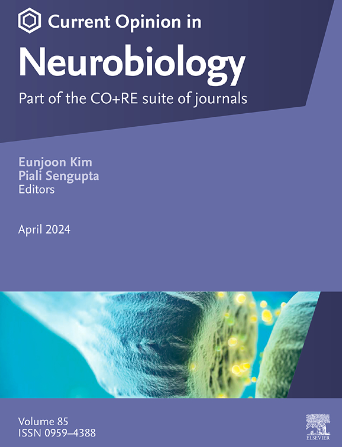学习近期统计数据和累积统计数据的不同作用
IF 4.8
2区 医学
Q1 NEUROSCIENCES
引用次数: 0
摘要
我们对熟悉环境的关键方面的感知几乎是立即的,而对不熟悉环境的感知则要慢一些。在这篇综述中,我们研究了近期与累积长期暴露在实现这种效率中的不同作用。累积的统计数据是稳定类别形成的基础(例如,我们母语中的音节),而最近的事件使我们的在线预测偏向于当前上下文。一般来说,发展中的个体更重视最近发生的事件,而不是单一的早期事件,但也重视累积的统计数据。然而,具有发育非典型性的个体表现出非典型性的统计学习模式:患有阅读障碍的个体倾向于不太重视长期统计,这影响了他们的长期分类。相比之下,自闭症患者像神经正常者一样利用长期的统计数据,但通过最近的事件更新他们的先验和运动计划的速度较慢,这降低了他们的灵活性。这些观察结果表明,统计学习的动态影响人们的社会和认知技能习得的优势和劣势。本文章由计算机程序翻译,如有差异,请以英文原文为准。
The different roles of learning recent and accumulative statistics
We perceive key aspects of familiar environments almost immediately, while perception in unfamiliar environments is slower. In this review, we examine the distinct roles of recent versus accumulative long-term exposure in enabling this efficiency. Accumulative statistics underlie the formation of stable categories (e.g. syllables in our native language), whereas recent events bias our online predictions toward the current context. Typically developing individuals place greater weight on recent events than single earlier events, but also weight accumulative statistics. However, individuals with developmental atypicalities show atypical patterns of statistical learning: individuals with dyslexia tend to assign less weight to long-term statistics, which affects their long-term categories. By contrast, autistics utilize long-term statistics like neurotypicals, but are slower in updating their priors and motor plans by recent events, which reduces their flexibility. These observations suggest that the dynamics of statistical learning impact the strengths and weaknesses of people's social and cognitive skill acquisition.
求助全文
通过发布文献求助,成功后即可免费获取论文全文。
去求助
来源期刊

Current Opinion in Neurobiology
医学-神经科学
CiteScore
11.10
自引率
1.80%
发文量
130
审稿时长
4-8 weeks
期刊介绍:
Current Opinion in Neurobiology publishes short annotated reviews by leading experts on recent developments in the field of neurobiology. These experts write short reviews describing recent discoveries in this field (in the past 2-5 years), as well as highlighting select individual papers of particular significance.
The journal is thus an important resource allowing researchers and educators to quickly gain an overview and rich understanding of complex and current issues in the field of Neurobiology. The journal takes a unique and valuable approach in focusing each special issue around a topic of scientific and/or societal interest, and then bringing together leading international experts studying that topic, embracing diverse methodologies and perspectives.
Journal Content: The journal consists of 6 issues per year, covering 8 recurring topics every other year in the following categories:
-Neurobiology of Disease-
Neurobiology of Behavior-
Cellular Neuroscience-
Systems Neuroscience-
Developmental Neuroscience-
Neurobiology of Learning and Plasticity-
Molecular Neuroscience-
Computational Neuroscience
 求助内容:
求助内容: 应助结果提醒方式:
应助结果提醒方式:


